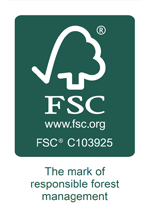Digital printing is a process that allows you to print on demand. You can get your finished product faster and sometimes with greater accuracy than traditional offset printing. Digital printing also lets you print on non-paper substrates, including plastic, metal, and glass.
In addition to speed and accuracy, digital printing offers another advantage: variable data. When you use digital printing for marketing materials such as brochures or postcards, you can use variable data by personalizing each piece with the recipient’s name or other information about him or her (such as an email address).
The paper stock is the only thing that changes.
The paper stock is the only thing that changes. The digital printer doesn’t need to be set up to print on different paper stocks, because all of the settings are stored in memory. This means that you can use any type of paper stock you want.
The paper stock can be changed by the operator (or someone from your team) at any point during a job, as long as it’s compatible with your printer and digital printing process.
If you’d like more control over which type of paper stock is used for specific jobs, or if you’d like customers to choose their own paper options when they order online or over email, then there are systems available that let users specify exactly what kind of paper they want before sending their print project off for production!
Custom ink colours are possible.
Custom ink colours are possible. You can use any colour in the Pantone® colour system, and we can mix colours on-site to match your corporate branding. This makes it easy for you to ensure that every print is consistent with your brand guidelines, or if you’re looking for something more fun and vibrant, we can even create a custom look just for your project!
We also offer full colour digital printing on our wide range of substrates including:
- PVC cards (credit card size)
- Plastic Cards (ID / membership size)
- Business Cards (letterhead size)
- Postcards / Flyers / Brochures
- Event tickets
Variable data.
Variable data printing is a form of digital printing that uses variable information, such as a customer’s name and address, to personalize a document or label.
Variable data can be used to produce personalized marketing materials like letters, envelopes and brochures. It can also be used to produce personalized documents such as certificates or diplomas. Variable data is most often found on business cards; however it can also be found on more complex items such as wraparound labels for bottles or other packaging applications.
Printing on non-paper substrates.
While paper is far and away the most popular substrate for printing on, it’s certainly not the only one. There are many other materials that can be printed on by digital printing technology.
Some of these substrates include:
- Plastic – This includes PVC and polypropylene (PP)
- Wood – Recycled wood and engineered wood products like MDF board are used as a support for inkjet printing
- Metal – Aluminium, brass, copper and stainless steel all make excellent choices for metal printing
- Glass – Another great choice for any project requiring durability in addition to style
- Textiles – Fabric is perfect for use as a textile print medium because it’s breathable, soft to touch, comfortable against skin contact but also hard wearing
Digital printing can be done faster and with sometimes more accuracy than traditional printing.
Digital printing can be done faster and with more accuracy than traditional printing. Digital printing also allows for greater precision, which reduces waste and helps you produce less error-prone products.
And because it’s faster, digital prints are often cheaper than their analog counterparts. Digital printing is also environmentally friendly—the chemicals you use to develop the printers are less harmful to the environment, and there’s no need for water or chemicals when cleaning up your equipment after use!
Digital printers are also easier to produce than traditional ones. Instead of pressing plates onto paper one at a time, digital printers work by transferring ink directly onto the paper on demand; this means that you don’t have to worry about making sure every step of your process is precise enough before proceeding with it—you just put out whatever product you want!


